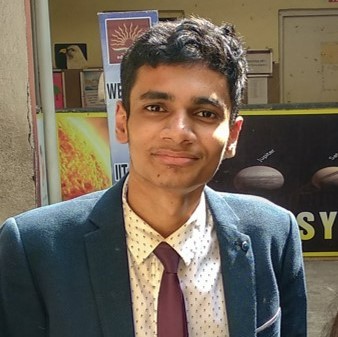Hello, I'm Adit Akarsh, currently a third year BTech student in the Electrical department. This article is about my internship journey in the second year.

The Preparation:
I belong to the batch which got the long summer break in 2020, right before our third semester. In this long summer break, I participated in the ITSP in a team of four, and we worked on a project related to face recognition. For this, I had completed around 4 weeks of Andrew Ng's Coursera ML course from which I picked up basic ML.
After the ITSP was over, our summer break was still going on and we had the Technical and Non Technical Summer Schools conducted by various clubs of our institute. I completed a course based on data analysis using Python (here I picked up knowledge about various Python libraries used for ML). Around this time, the DS minor and the course plan for DS203 was introduced, and it seemed to build upon these concepts. I took that up as well later, when the semester started.
The internship season:
Finally, the internship season started around October. Around 3-4 companies arrived, along with 3-4 universities before Phillips. I was shortlisted in one for the final interview but didn't get selected.
The Phillips IAF arrived. There was a shortlist for giving the test, and then an interview shortlist based on the test results. The test itself was based on knowledge of basic ML, and so was the interview. Knowledge of terms like dropout regularisation, different types of regression, overfitting, popular CNN architectures were tested in both of them.
One important thing I would recommend is- thoroughly read up everything about all the projects in your resume. I had forgotten some details of the ITSP project, but I admitted this to the interviewer and the he moved to asking theoretical questions where I was able to get the interview back on track.
After the technical interview, there was an HR interview as well but it was just a formality.
The work:
The internship was work from home, which was annoying. The upside is that I had no meetings in the morning and I could work as per convenience. We had only two weekly meets of an hour each for discussing the work done and the work to be done. The work was related to the usage of deep learning models on medical images for object detection and classification. I worked on two models mainly- HRNet and ViT. My main job was modifying these networks to get higher classification accuracies. The seniors were very friendly and helpful, and understood when I found the tasks a bit overwhelming.
The workload was quite low, especially in the initial weeks. But I liked the exposure to deep learning research, patent applications, and latest research papers.
Final opinions-
The internship journey feels a bit "random" sometimes, and it often is. All I can say is that the lack of a second year intern did not seem to have a significant impact in our third year internship selections, so it might not be as important as it would seem in the second year.
Reading such articles might also give an impression that doing X would result in getting an intern at Y, but it's never that simple, and there was definitely luck involved in getting selected. But that just means you have to put in all the effort and still be ready to face the possibility of rejection, not that you leave everything to your luck.